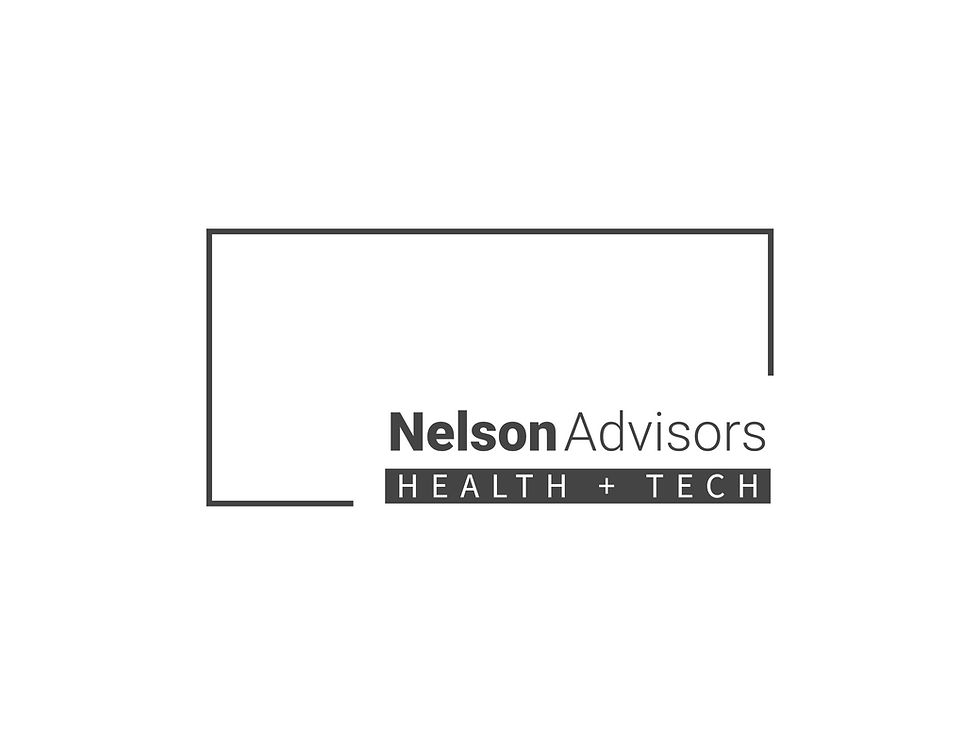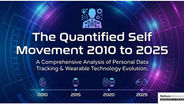New Frontiers in HealthTech: Semantic Interoperability and the ability of different Healthcare systems to Exchange and Interpret data with Shared meaning
- Lloyd Price
- May 1
- 5 min read

New Frontiers in HealthTech: Semantic Interoperability and the ability of different Healthcare systems to Exchange and Interpret data with Shared meaning
Semantic interoperability, the ability of different healthcare systems to exchange and interpret data with shared meaning, is indeed the next frontier in HealthTech. In today's increasingly digital and interconnected healthcare landscape, the sheer volume and variety of data generated across disparate systems, from Electronic Health Records (EHRs) and medical devices to wearables and remote monitoring platforms present both immense opportunities and significant challenges.
The Imperative of Semantic Interoperability
Basic interoperability, which focuses on the technical exchange of data, is no longer sufficient. Semantic interoperability goes further by ensuring that the meaning, context, and intent of the data are preserved and understood consistently across different systems. This is crucial for several reasons:
Enhanced Clinical Decision-Making: When healthcare providers have access to comprehensive and accurately interpreted patient data, they can make more informed and timely decisions, leading to better diagnoses and treatment plans. For instance, a cardiologist reviewing an ECG from a wearable device needs to understand the measurements and their clinical significance in the same way the device and the EHR system do.
Improved Patient Outcomes and Safety: Misinterpretations or loss of data meaning can lead to medical errors and adverse events. Semantic interoperability minimizes these risks by ensuring a unified understanding of patient information across all points of care. For example, when a patient's allergy information is consistently understood by the prescribing system, pharmacy, and hospital, the risk of an allergic reaction due to medication errors is significantly reduced.
Operational Efficiency and Cost Reduction: Semantic interoperability streamlines workflows by reducing the need for manual data reconciliation and redundant tests. When systems can seamlessly understand and utilize data from other systems, administrative burdens decrease, and resources are used more efficiently. A study mentioned that effective data interoperability could save the U.S. healthcare system billions of dollars annually.
Support for Advanced Analytics and Research: Standardized and semantically consistent data is essential for leveraging the power of artificial intelligence (AI) and machine learning (ML) in healthcare. These technologies can analyze large datasets to identify patterns, predict health trends, personalize treatments, and advance medical research. For example, AI algorithms can analyze semantically interoperable data from diverse sources to predict patients at high risk of hospital readmission or to identify potential drug interactions.
Empowering Patient Engagement: When patients can access and understand their health information across different platforms, they become more engaged in their care. Semantic interoperability facilitates the integration of patient portals and mHealth applications, allowing patients to actively participate in managing their health.
The Role of AI in Driving Semantic Interoperability
Artificial intelligence, particularly Natural Language Processing (NLP) and Machine Learning (ML), is playing a pivotal role in overcoming the challenges of semantic interoperability:
Natural Language Processing (NLP): Healthcare data often includes unstructured text in clinical notes, discharge summaries, and patient communications. NLP techniques can extract medical entities (e.g., symptoms, diagnoses, medications), understand the context, and map these to standardized terminologies like SNOMED CT, LOINC, and ICD-10. For instance, NLP can differentiate between "no chest pain" and "chest pain" in a patient's notes and accurately code it.
Machine Learning (ML): ML algorithms can learn complex clinical patterns from historical data to predict outcomes and adapt to different clinical environments (e.g., pediatrics vs. geriatrics). They can also improve the accuracy of data mapping and terminology standardisation over time through continuous training and feedback loops.
Intelligent Middleware: AI is used to build intelligent middleware that acts as a "semantic translator" between different healthcare systems. This middleware can understand how various systems operate, apply real-time decision rules for data transformation, and integrate data from diverse sources like wearables, IoMT devices, EHRs, and third-party apps. For example, an AI middleware can take glucose readings from a continuous glucose monitor, translate them into a standardised format, and integrate them into the patient's EHR.
Challenges to Achieving AI-Driven Semantic Interoperability
Despite the immense potential, several challenges need to be addressed to fully realize AI-driven semantic interoperability:
Variability in Terminology and Data Standards: Different healthcare organizations and systems often use diverse terminologies, data models, and formats, including legacy systems built on older standards. Overcoming this requires adopting and consistently implementing industry-recognized standards like HL7 FHIR, LOINC, and SNOMED CT. AI-enabled data mapping tools can help automate the alignment of disparate terminologies.
Data Silos and Lack of Integration: Healthcare data is often fragmented across isolated EHR systems, hospitals, clinics, and other entities. Achieving semantic interoperability requires breaking down these silos and establishing secure and seamless data exchange mechanisms through APIs and health information exchanges (HIEs).
Privacy and Security Concerns: The exchange of sensitive patient data necessitates robust security and privacy safeguards. AI solutions must be implemented with end-to-end encryption, secure APIs, and role-based access controls. Federated learning models can enable AI training across distributed data sources without moving the actual data, enhancing privacy.
Implementation Complexity and Cost: Integrating diverse healthcare systems and implementing AI-driven semantic interoperability solutions can be complex and costly. Strategies to mitigate this include partnering with specialised vendors, using modular and pre-trained AI models, and up-skilling internal teams.
Data Quality and Governance: The accuracy and reliability of data are crucial for meaningful semantic interoperability. Implementing robust data governance frameworks, data validation processes, and terminology management systems is essential to ensure data quality.
The Future of HealthTech
AI-driven semantic interoperability is poised to be a foundational element of the next generation of HealthTech. As healthcare moves towards precision medicine, value-based care, and hyper-personalized services, the ability to seamlessly understand and utilize data from various sources will be paramount. This will power innovations such as:
AI-led Diagnostics and Personalised Treatment: AI algorithms leveraging semantically interoperable data will enable more accurate and timely diagnoses and the development of highly personalised treatment plans based on individual patient profiles.
Virtual Care and Remote Patient Monitoring: Semantic interoperability will facilitate the seamless flow of data from remote monitoring devices and virtual care platforms into EHRs, enabling continuous and comprehensive patient management.
Predictive and Prescriptive Analytics for Proactive Care: AI-powered analytics, fueled by interoperable data, will allow healthcare providers to predict potential health risks and proactively intervene, improving patient outcomes and reducing healthcare costs.
AI-driven semantic interoperability represents a critical evolution in HealthTech, moving beyond basic data exchange to enable true understanding and meaningful use of health information. While challenges exist, the potential benefits for improving patient care, enhancing efficiency, and driving innovation are immense, making it a central focus for the future of healthcare.
Nelson Advisors > HealthTech M&A
Nelson Advisors specialise in mergers, acquisitions and partnerships for Digital Health, HealthTech, Health IT, Healthcare Cybersecurity, Healthcare AI companies based in the UK, Europe and North America. www.nelsonadvisors.co.uk
We work with our clients to assess whether they should 'Build, Buy, Partner or Sell' in order to maximise shareholder value and investment returns. Email lloyd@nelsonadvisors.co.uk
Nelson Advisors regularly publish Healthcare Technology thought leadership articles covering market insights, trends, analysis & predictions @ https://www.healthcare.digital
We share our views on the latest Healthcare Technology mergers, acquisitions and partnerships with insights, analysis and predictions in our LinkedIn Newsletter every week, subscribe today! https://lnkd.in/e5hTp_xb
#HealthTech #DigitalHealth #HealthIT #NelsonAdvisors #Mergers #Acquisitions #Growth #Strategy #Cybersecurity #HealthcareAI #Partnerships #NHS #UK #Europe #USA #Canada
Nelson Advisors
Hale House, 76-78 Portland Place, Marylebone, London, W1B 1NT
Contact Us
Meet Us
Digital Health Rewired > 18-19th March 2025
NHS ConfedExpo > 11-12th June 2025
HLTH Europe > 16-19th June 2025
HIMSS AI in Healthcare > 10-11th July 2025




















































Comments